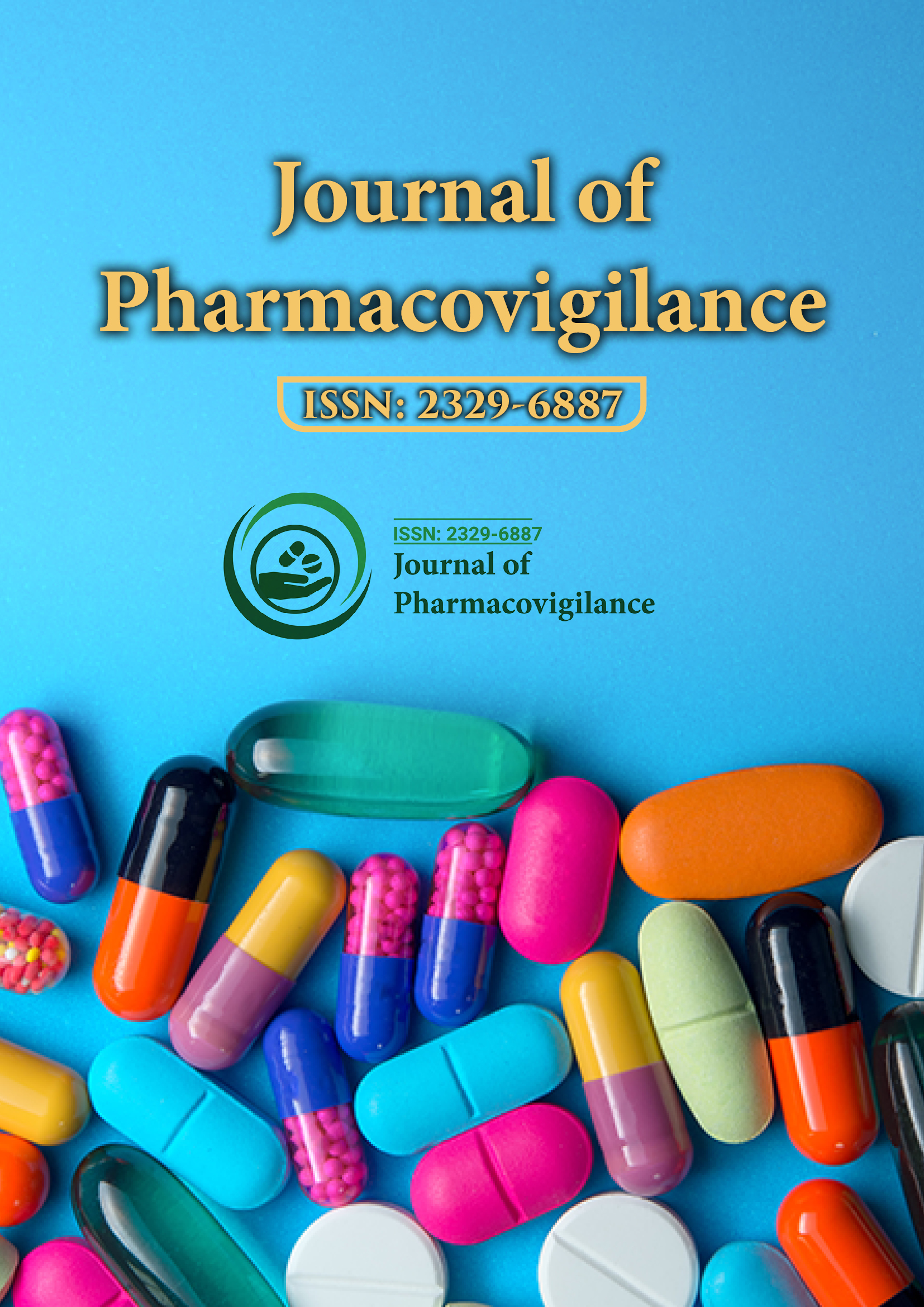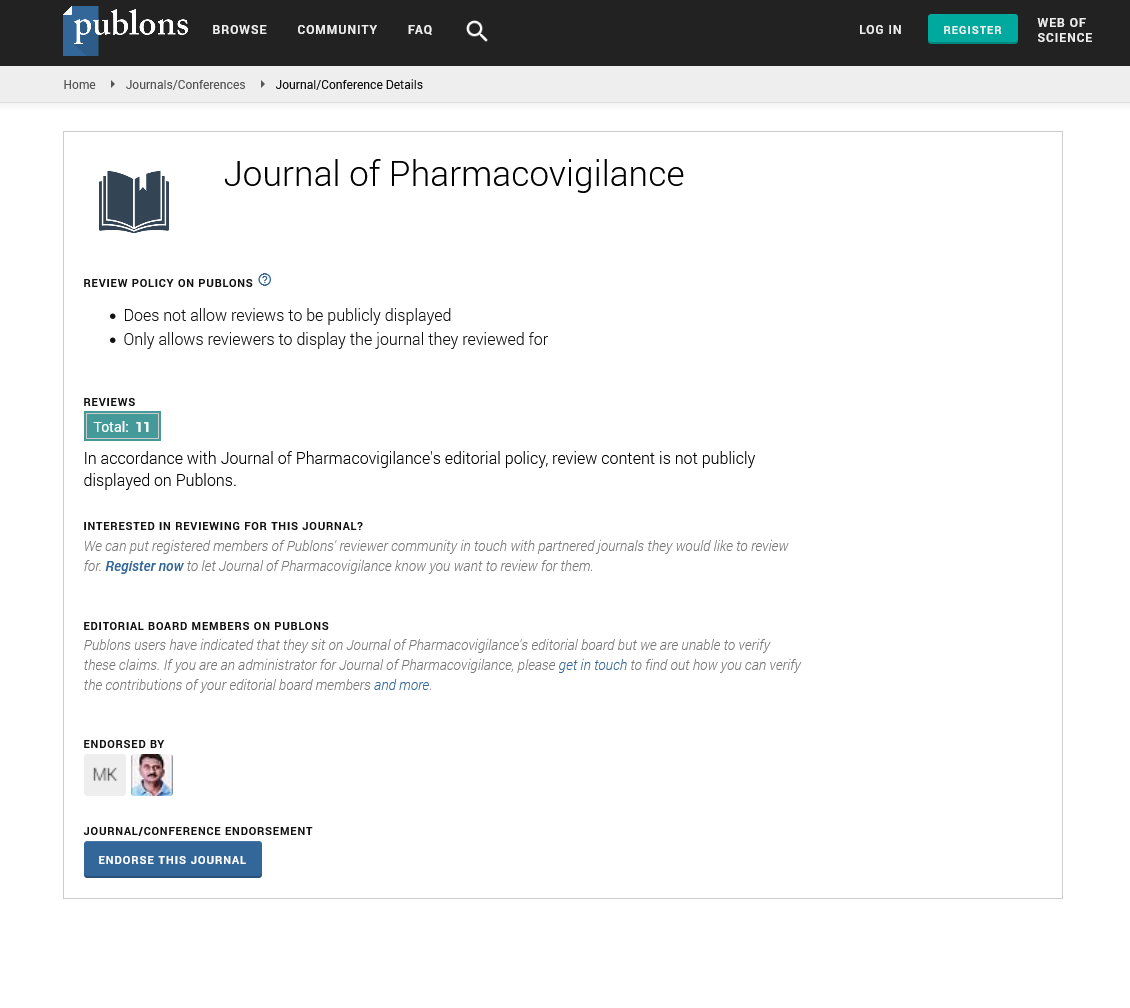Indexed In
- Open J Gate
- JournalTOCs
- The Global Impact Factor (GIF)
- RefSeek
- Hamdard University
- EBSCO A-Z
- OCLC- WorldCat
- Publons
- Euro Pub
- Google Scholar
Useful Links
Share This Page
Journal Flyer

Open Access Journals
- Agri and Aquaculture
- Biochemistry
- Bioinformatics & Systems Biology
- Business & Management
- Chemistry
- Clinical Sciences
- Engineering
- Food & Nutrition
- General Science
- Genetics & Molecular Biology
- Immunology & Microbiology
- Medical Sciences
- Neuroscience & Psychology
- Nursing & Health Care
- Pharmaceutical Sciences
Opinion Article - (2024) Volume 12, Issue 4
Optimizing Neuropsychiatric Medication Safety: Challenges and Advancements in Pharmacovigilance
Katrien Aleksandrov*Received: 20-Nov-2024, Manuscript No. JP-24-28261; Editor assigned: 22-Nov-2024, Pre QC No. JP-24-28261(PQ); Reviewed: 10-Dec-2024, QC No. JP-24-28261; Revised: 17-Dec-2024, Manuscript No. JP-24-28261(R); Published: 24-Dec-2024, DOI: 10.35248/2329-6887.24.12.497
About the Study
Neuropsychiatric medications play a vital role in managing a wide range of mental health conditions, from anxiety and depression to schizophrenia and bipolar disorder. While these medications offer significant therapeutic benefits, they can also carry a spectrum of potential side effects, some of which can be serious or even life-threatening. This underscores the critical importance of robust pharmacovigilance systems to ensure the safe and effective use of these medications. Pharmacovigilance, the science and activities relating to the detection, assessment, understanding and prevention of adverse effects or any other drug-related problem, is a cornerstone of modern drug safety. In the context of neuropsychiatric medications, pharmacovigilance faces unique challenges due to the complex nature of these medications and the inherent difficulties in monitoring their effects. One of the primary challenges is the subjective nature of many neuropsychiatric adverse events. Unlike physical side effects, such as rash or nausea, which are often objectively measurable, neuropsychiatric adverse events, such as changes in mood, cognition, or behavior, can be more difficult to quantify and attribute to medication use. This subjectivity can lead to underreporting of adverse events, as both patients and healthcare providers may not readily recognize or report subtle changes in mental state.
Furthermore, the long-term nature of many neuropsychiatric conditions necessitates long-term medication use, increasing the potential for delayed or cumulative adverse effects. Monitoring these long-term effects can be challenging, as patients may be reluctant to report subtle changes that they attribute to their underlying condition rather than their medication. Additionally, the presence of multiple comorbidities in many patients with mental health conditions can complicate the identification of medication-related adverse events. Despite these challenges, significant advancements have been made in pharmacovigilance for neuropsychiatric medications. The development of standardized assessment tools and rating scales has improved the consistency and reliability of adverse event reporting. These tools, such as the Adverse Event Profile (AEP) and the Medication Effects Rating Scale (MERS), provide a structured framework for clinicians to assess and document potential medication-related side effects. Technological advancements have also revolutionized pharmacovigilance. Electronic Health Records (EHRs) and electronic data capture systems facilitate the efficient collection and analysis of patient data, including medication use, adverse event reports and clinical outcomes. Data mining and machine learning algorithms can identify patterns and signals in large datasets that may not be apparent through traditional methods, enabling the early detection of potential safety signals. Real-World Data (RWD) from various sources, such as electronic health records, claims databases and patient registries, is increasingly recognized as a valuable resource for pharmacovigilance. RWD can provide insights into medication use patterns, adverse event rates and treatment outcomes in diverse populations, complementing the information obtained from traditional clinical trials. The active involvement of patients and patient advocacy groups is another important aspect of modern pharmacovigilance. Patient reporting of adverse events through initiatives such as the Food and Drug Administration (FDA's) MedWatch program can provide valuable information that may not be captured through traditional healthcare settings. Patient organizations can also play a vital role in educating patients about potential side effects and encouraging them to report any concerns to their healthcare providers.
Conclusion
Pharmacogenomics, the study of how genetic variations influence drug response, can help identify patients at increased risk of adverse events or who may benefit from specific medication doses or regimens. The development of biomarkers for early detection of adverse events could enable proactive interventions to mitigate potential harm. For example, biomarkers for Neuroleptic Malignant Syndrome (NMS), a potentially life-threatening adverse reaction to antipsychotic medications, could allow for early identification and treatment of at-risk patients. However, significant advancements in data collection, analysis and reporting have improved our ability to monitor the safety of these medications.
Citation: Aleksandrov K (2024). Optimizing Neuropsychiatric Medication Safety: Challenges and Advancements in Pharmacovigilance. J Pharmacovigil. 12:497.
Copyright: © 2024 Aleksandrov K. This is an open-access article distributed under the terms of the Creative Commons Attribution License, which permits unrestricted use, distribution, and reproduction in any medium, provided the original author and source are credited.

